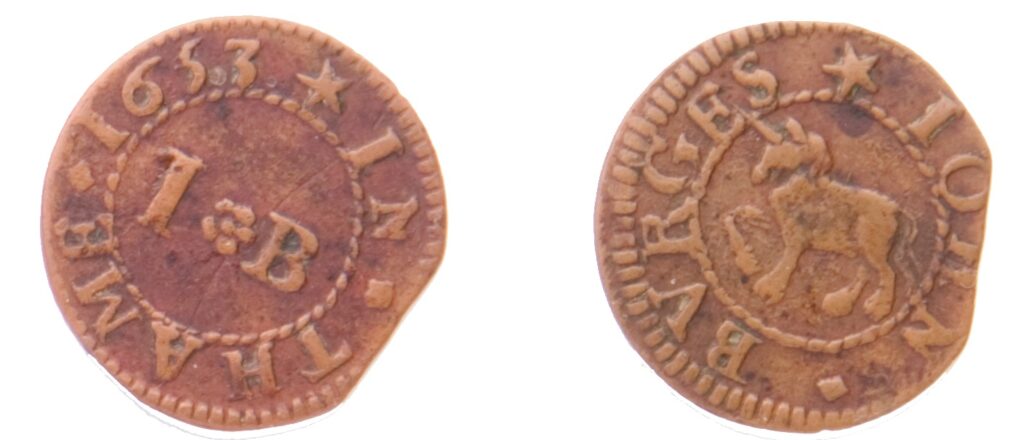17th Century Trade Token Farthing Dated 1653 for John Burges
By 1652, political unrest after the beheading of Charles I, led to the short supply of small coins like farthings, halfpennies and pennies. Farthing, halfpenny and penny tokens were issued by towns and traders where businesses were struggling. In the case of Thame, 18 trade tokens are now in the museum collection. They give a glimpse of daily life with their symbols and markings which represent Inn-names and individual businesses such as grocers, tailors and drapers.
John Burges was an innkeeper and kept the Unicorn Inn. His parents were Thomas, a wealthy brazier (brass worker), and Dorothy. His brother Simon was also involved in the brass trade. It is likely that the Burgess family business benefited from the issuing of trade tokens between 1653 and 1669.
The obverse side of the token usually bore the initials of the merchant and their trade and the reverse side their trade tools or produce.
John’s token is a farthing issued in 1653. One side includes his name and a unicorn in the centre.

The other side the date 1653 and the words “Of Thame”, with his initials in the centre.
The tokens were demonetised in 1672 when Charles II introduced the first royal copper halfpenny and farthing
The Unicorn Inn in Thame is listed as one of several pubs where the location is unknown.
